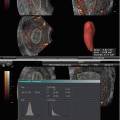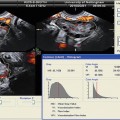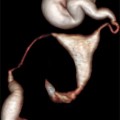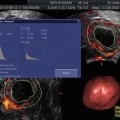Laurel Stadtmauer and Ilan Tur-Kaspa (eds.)Ultrasound Imaging in Reproductive Medicine2014Advances in Infertility Work-up, Treatment, and ART10.1007/978-1-4614-9182-8_4
© Springer Science+Business Media New York 2014
4. Legal Aspects of Ultrasound Imaging in Reproductive Medicine
(1)
Department of Obstetrics and Gynecology, University of MississippiUniversity of Mississippi, 2500 North State Street, Room L305 (for FedEx or UPS), Jackson, MS 39216, USA
Abstract
This chapter reviews the legal concepts of malpractice as they relate to ultrasound in reproductive medicine. It addresses the responsibilities of supervising physicians, the qualifications for sonographers, and others who perform ultrasound, including the concept of respondeat superior. Presented are the most frequent causes of malpractice litigation resulting from the use of ultrasound. Specific clinical examples of common errors that lead to litigation are discussed comprising perception errors, interpretation errors, failing to suggest the next appropriate procedure, and failure to communicate significant abnormal findings. The importance of quality control and timely reporting is summarized as they relate to reproductive ultrasound. The author also addresses new horizons in ultrasound liability, such as first-trimester screening. A portion of the chapter is devoted to healthcare fraud related to the use of ultrasound in reproductive medicine, specifically addressing coding errors and fraudulent billing. Further, steps for establishing a compliance program for coding and billing are discussed. This serves as a resource for physicians assessing their practices, policies, and procedures
Legal Aspects of Ultrasound Imaging in Reproductive Medicine
Medical liability concerns all providers and has great impact on the health system. Recognizing the prime areas of risk and proactively addressing these issues can reduce the frequency and severity of litigation. However, liability now extends to billing fraud, which can be even more financially devastating.
The elements of malpractice include the following: (1) the duty to care for a patient; (2) a breach of that duty, i.e., a breach of the standard of care; (3) that breach is the proximate cause of an adverse outcome or complication; and (4) damages result that are compensable. If any one of these elements is not met, then the action fails or in other words defensible. Litigation in ultrasound imaging focuses on two areas: (1) the proper performance of the study with acquisition of images suitable to render a diagnosis and (2) errors surrounding study interpretation and reporting.
Performance of the Ultrasound Study
Litigation in this area tends to focus on the following:
1.
Inadequate training of the person performing the ultrasound study
2.
Inadequate and thus negligent performance of the study, with inadequate or incomplete images
3.
Inadequate supervision of the sonographer
4.
Lost or misplaced images
5.
Inadequate equipment maintenance
Personnel Performing Ultrasound Examinations
There are specific issues that are unique to ultrasound. Ultrasound performance is often delegated to other personnel. The American Institute of Ultrasound in Medicine (AIUM) accreditation guidelines require that all persons who perform ultrasounds, other than physicians, are either RDMS (Registered Diagnostic Medical Sonographer) certified or eligible [1]. However, many reproductive medicine practices use nurses, nurse practitioners, or other personnel who do not meet these criteria to perform ultrasound. In 2009, the American Institute of Ultrasound in Medicine (AIUM) and the American Society of Reproductive Medicine (ASRM) issued a consensus statement regarding focused ultrasounds in reproductive medicine [2]. Ultrasounds for follicular monitoring are intended to provide specific diagnostic information comprising the number and size of developing follicles, as well as uterine evaluation including endometrial thickness and morphology. These are considered limited ultrasounds, rather than complete diagnostic sonographic studies. The consensus is that such limited examinations are within the scope of practice of a nurse with specific training and with appropriate physician supervision in an infertility practice. However, it states that a comprehensive ultrasound examination should have been performed within the prior 4–6 months to exclude significant gynecologic pathology.
A caution is that the position of AIUM and ASRM on nurses performing ultrasound examinations pertains to the limited studies appropriate for monitoring ovulation induction. If the practice performs comprehensive diagnostic studies, according to AIUM guidelines, these should be performed by physicians or appropriately trained and qualified personnel. If not, the physician is at increased legal risk in the event of misdiagnosis.
Adequacy of the Ultrasound Study
Images obtained should conform with the guidelines set forth by AIUM [3–5]. Incomplete studies expose the physician to increased risk as the lack of images supporting the reported diagnosis reduces defensibility. Also, the lack of a documented complete study can expose the physician to a claim of insurance fraud specifically billing for a higher level of service than supported by documentation.
Ultrasound Supervision
The Centers for Medicare and Medicaid Services (CMS) states, with one exception, that “general supervision” of personnel performing ultrasounds is required. “General supervision” dictates that the physician’s presence is not required during the performance of the procedure. However, the training of the nonphysician personnel who perform the diagnostic procedure and equipment maintenance are the responsibility of the physician [6




Stay updated, free articles. Join our Telegram channel

Full access? Get Clinical Tree








